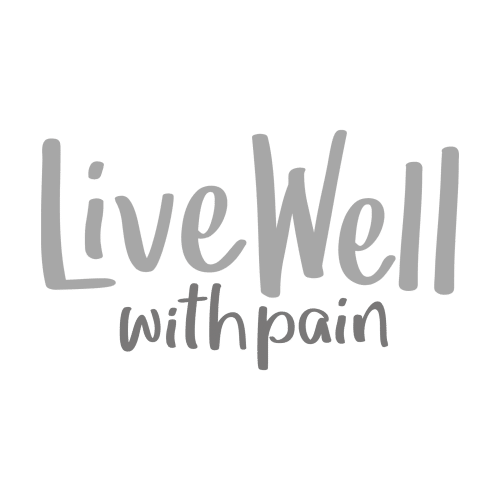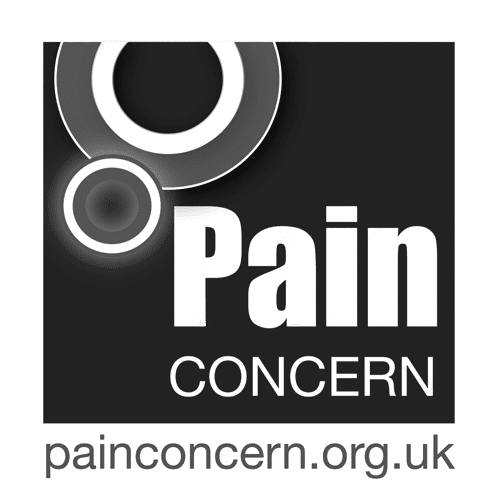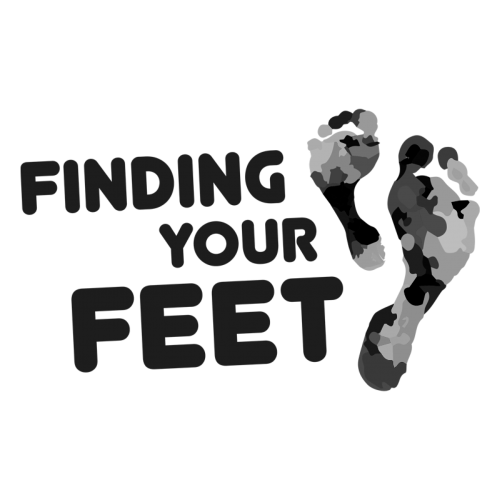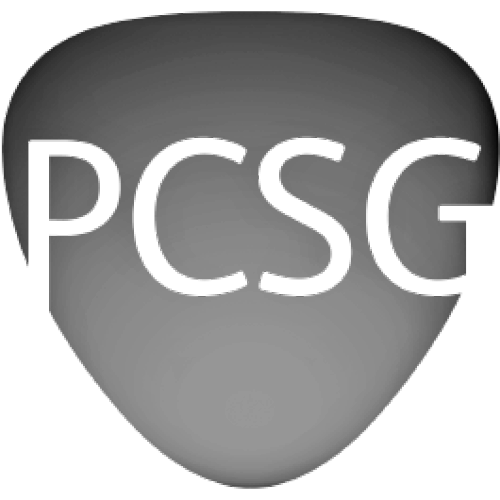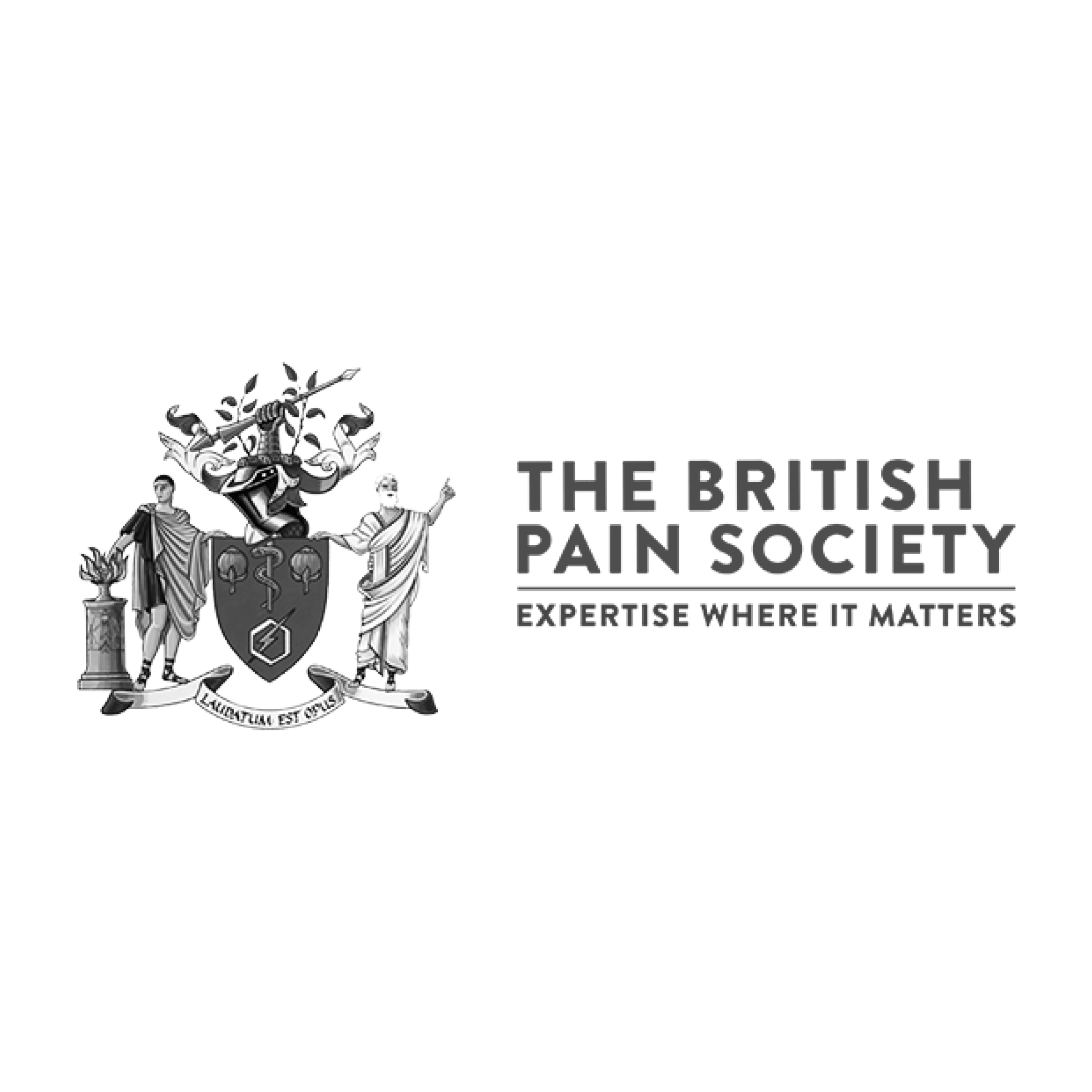If you missed our ‘Why Re-thinking Pain Really Matters’ webinars, you can catch up here:
Webinar One
‘Rethinking Pain: New understanding & new possibilities’ with Prof Lorimer Moseley AO & expert panel – Click here to watch
Webinar Two
‘Why everything matters when it comes to pain’ with Prof Cormac Ryan & expert panel – Click here to watch
Webinar Three
‘Flippin’ everything you thought you knew about arthritis’ with Associate Prof Tasha Stanton & expert panel – Click here to watch
Catch up on the full Q&A sessions, including questions we didn’t cover in the live events, below:
MODELS OF PAIN & STRATEGIES
Does the immune system play a role in pain?
Prof Tasha Stanton: Yes! Our nervous system and our immune system often work hand in hand. One of the functions of the immune system is to influence inflammation and when the balance in your body is more pro-inflammatory (more inflammation) this can make things more sensitive and make things hurt more. You might have noticed this when you get the flu? Parts of your body that may have hurt in the past, but were completely fine before you got the flu, start to ache again. The evidence shows that a low-level of body-wide inflammation is actually important in osteoarthritis pain and even the progression of osteoarthritis – this is one of the reasons why physical activity (in the right dose) and eating well can help with osteoarthritis – they reduce inflammation. Interestingly, when inflammation is lower, you even learn better!
Prof Lorimer Moseley: I haven’t got much to add to Tasha’s answer, except to say that your immune system has many levers it can use to ‘turn up protection’. Turning up protection makes your pain more common and worse. It’s your immune system that makes everything very sensitive around a new injury too.
Do you think that the ‘five stages of grief model’ is often applicable in cases of persistent pain and if so, how is best to navigate/deal with this?
Martin Dunbar: The short answer is both yes and no. Often, when people develop persistent pain, this is accompanied by a lot of losses; loss of function, roles, relationships, finances, hobbies, and so on. People will often say that they are grieving for their former lives. Thinking of the stages of grief, denial can also be common when people develop persistent pain. I have seen many people pushing on, particularly with trying to stay in work, and not being prepared to accept help, or that it’s just too much for them. Unfortunately, this tends to be harmful as something has to give, and it’s often the things that make life worthwhile, like seeing friends or continuing with hobbies that are let go of. Ultimately, life ends up consisting of work and recovery time, in an endless cycle with little room for pleasure and fun. I’ve also seen people get really angry with what has happened to them and they can get stuck in that anger, which is also self-destructive. Bargaining may also happen, like in the example above, where some things are let go in order to keep the important things, like work or caring for relatives, going. Depression is also a common reaction, probably in as many as half the people living with daily pain. Finally, whilst acceptance is often the desired endpoint, this can mean different things to different people. Accepting that there is unlikely to be a magic pill or procedure to take the pain away stops people from pursuing treatments that cause harm. Accepting that compromises have to be made in order to accommodate the limitations that pain brings is definitely sensible. Neuroscience tells us that constantly pushing into pain keeps the pain system on high alert. I don’t think though that acceptance is giving into the pain, as active self-management takes a lot of effort, and is very different from being resigned to a limited life. What I’m less sure about is whether the above are stages that everyone with pain goes through. People are different and have different ways of coping. Even when someone feels that they are accepting, there can be circumstances where they lose sight of this. I think these criticisms have also been made of the stages model of grief. Living well with pain is a journey with ups and downs but hopefully moving in the right direction.
Why are some flare ups more painful and longer lasting than others when environmentally, psychologically and physically, nothing has changed?
Prof Cormac Ryan: This is an excellent question, and like all excellent questions, not an easy one to answer. Our alarm system is a subconscious thing and is extremely sensitive to everything going on around it. Thus, while consciously everything (environment, psychology, physical, social) may seem the same, our alarm system may be picking up things that we are not. You could liken your alarm system to a guard dog with a highly acute sense of hearing so that it starts barking long before you become aware of the postman at your front gate. You may not even notice the postman come and go – but your guard dog does and barks repeatedly for no apparent reason. As such, if the amount of perceived threat by the system (largely unseen by the conscious individual) varies from situation to situation this could easily result in some flare ups lasting longer than others without a clearly visible reason.
Prof Tasha Stanton: I don’t have too much to add to this answer – beautifully explained! Some of the experiments that we do show that things we are not even aware of can profoundly influence what we experience – think of the visual illusions like the rotating mask illusion (also called the hollow-face illusion: https://en.wikipedia.org/wiki/Hollow-Face_illusion). It appears as though the mask is changing rotation direction, but it actually isn’t. Our brain just doesn’t like to see faces that curve inwards. So it changes the rotation that we perceive the mask to be rotating so that we continue to see a face that curves outwards. Now vision is a very reliable sense – we trust it a lot! – and yet, even a super reliable sense like vision can be tricked. So think about how much something like pain might be able to be influenced by things you aren’t even aware of.
Prof Lorimer Moseley: What excellent answers! I think Cormac hit the nail on the head with ‘everything (environment, psychology, physical, social) may seem the same’ but in reality, everything can never actually be the same. For one thing – our very clever systems will have learnt something from the last time we were in a similar situation.
Just because it is the last question and both these answers talked about the fact that there are many things that happen and that our system responds to without us knowing, get this amazing thing I just learnt: The nerves that send messages from the tissues of our body to the spinal cord run through this thing called the DRG. When a message reaches the DRG, it triggers a series of events. In that one part of the sensory system, inside the DRG, there are more possible combinations of events than there are stars in the universe. Many scientists consider what happens in the DRG as being simple compared to what happens in the brain. One thing is for sure, we remain unaware of almost everything our system is doing, ultimately just trying to keep us safe and well.
TRAUMA AND PSYCHOLOGICAL
Is there a link between pain and psychological trauma?
Nina Cockton: Trauma and distress can be a significant factor in the development of persistent pain – as we now know, persistent pain changes our brain and nervous system. The nervous system becomes over-sensitive and over-protective. Trauma can also cause the nervous system to become over-reactive, meaning it gets stuck in a state of “high alert”. So there is some overlap between the responses that our brain can produce with pain and with trauma, both responses are designed to protect us but can be hard to manage and can get in the way of day to day life. For some people, the pain itself might be very closely linked to a traumatic injury, or an injury sustained by another individual in some form of attack or abuse. Pain can then trigger distressing memories of the injury or abuse. It seems that the brain is asking, “When have I felt like this before? What happened? How can I be safe now?” This causes memories of previous times the pain has been present to come into focus. This can mean flashbacks, or rumination on traumatic memories. Understanding that this is because the brain is trying desperately to protect in this moment can help us step back from these thoughts and be more compassionate and understanding of this automatic response. Making sense of how our brain works can not only help us see that it’s not our fault or something is ‘wrong’ with us, reduce worry and fear about what’s happening, but also lead towards thinking about ways to cope with what we feel and experience.
Is there a link between pain and depression?
Nina Cockton: The simple answer is yes, but it is complex and not just a straightforward ‘cause and effect’ link. Studies suggest that around 40-60% of people with persistent pain also have depression. Depression might have started before pain, but it can then increase pain sensitivity, turning the volume up. Clearly, low mood can also occur as a result of the challenges of living with long-term pain, especially if pain reduces physical and social activities, which can result in isolation, loss of self-worth and other psychological distress that we find in depression. When depression sits alongside persistent pain, it can be hard to feel hopeful about the future or feel motivated to work with self-management approaches, which in the longer term could help improve quality of life. So working to manage low mood is a key part of pain management.
Is it possible to ‘over-control’ pain? ie. In working on my pain, I now feel less emotion as well as less pain.
Nina Cockton: It’s quite difficult to answer this here in depth without knowing the full context but I’ll summarise some thoughts and hope that these help? When we work to improve coping with pain, we’re not aiming for ‘control’ as we know this is almost impossible and striving for it can create its own problems, but rather ‘management’. Similarly, part of this includes ‘managing’ (but not ‘controlling’) our emotional responses to pain, and to other life experiences. Being able to respond in a compassionate way to our own physical and emotional pain can be key. Having emotions is an entirely normal part of being human; it signals for us what is impacting on us and serves to motivate us to behave in particular ways. Being able to make sense of our feelings and to understand and acknowledge what’s going on for us can help us manage emotions better. I’m not sure if ‘feeling less emotion’ means that there’s some avoidance of feelings or distraction from them, or there’s less intensity or range of emotions. Emotions themselves are neither ‘good’ nor ‘bad’, but the context, the intensity, duration and behaviours they bring about determine whether they are helpful or unhelpful to us when we experience them. As well as experiencing ‘stress’ symptoms, like increased heart rate and racing thoughts, when we feel unpleasant emotions we can also drop into a more ‘numbed’ state, where we might have more of an absence of emotion and can feel like our minds and body are not quite in the same space. This is our ‘freeze’ response, rather than our ‘fight or flight’ stress reaction. Much of the management of both pain and tricky emotions, is not aimed at ‘getting rid of’ but rather ‘making room for’ and opening up to tolerating difficult sensations.
SPECIFIC CONDITIONS
How does this new modern view of pain relate to conditions such as fibromyalgia and endometriosis or other problems that might not improve on their own?
Steve Gilbert: I think in these conditions you can recognise patterns which tie in with central sensitisation (or nociplastic pain): pain levels go up and down – they can flare up with things that you wouldn’t expect to cause any damage such as light activity, staying in one place too long, a change in the weather or changes with stress & fatigue – pain might spread from one area to another – all of this points to a sensitised nervous system where there is unlikely to be a medicine or procedure that is going to make the nervous system go back to normal – it takes understanding and retraining to make a difference.
Prof Cormac Ryan: This new modern view of pain relates to all persistent pain conditions. All pain is a biopsychosocial experience. This means that all pain is influenced by biological, psychological, and social factors. The weighting of these factors varies from condition to condition, from individual to individual and even from moment to moment. Irrespective of your diagnosis, your beliefs and worries about your pain along with lifestyle factors can influence your pain. Engaging in active physical and psychological therapies that are evidence based should have a positive impact on you.
I’ve had severe phantom pain for years, I’ve tried several treatments, pharmautical, mental, emotional, I haven’t found anything effective yet. Any ideas?
Prof Lorimer Moseley: There is some evidence for Graded Motor Imagery and using Virtual Reality – as well as having a good prosthesis. There is some interesting research on osseointegration. Often treatments for neuropathic, (nerve damage) pain are tried and some people benefit, but the evidence is not very strong.
Steve Gilbert: Phantom pain is a very difficult problem. It is often very distressing and because the body part is absent or has no nerve supply, some of the things people can normally do to change their pain are impossible. This is why we have just started a big project on phantom pain. This project is testing a treatment with two parts. The first part is learning as much as possible about how phantom pain works, and how YOUR phantom pain works (because no two phantom pain conditions are identical). This part was the focus of the webinars and is being used for many chronic pains. The second part is a program of exercises specifically designed for phantom pain. Some physiotherapists are aware of both parts and you could ask yours if they are.
- These are questions for your physiotherapist:
- Question 1: How can I learn as much as possible about how phantom pain works and how my own phantom pain works?
- Question 2: Can you teach me about Graded motor imagery and sensory discrimination training?
How does a mix of persistent pain and acute pain ‘confuse’ our pain management journey? (for example – living with widespread chronic pain but also experiencing daily subluxations from hypermobility)
Prof Lorimer Moseley: I think our health care systems are very good at responding to acute problems but less so at dealing with chronic problems. When you have ‘acute on chronic’ pain, it often confuses doctors and health care professionals, which will usually confuse your pain management journey. This is a problem we are all trying to fix. In the meantime, here are two things you can think about:
- Chronic pain nearly always has some degree of ‘pain system hypersensitivity’. This means that there will be many ways to reduce your chronic pain over time, using the ideas that Cormac spoke about, where ‘everything matters’. It can be difficult to find the ways that work for you, but they will be there. You might need a coach to help and a good physio is a good start. Ask them this question:
- Can you teach me how pain works and how I can find new ways to reduce my pain?
- Pain system hypersensitivity means that the acute pains might be worse too. I think you can help your doctors and physios help you by YOU explaining to THEM that you have chronic pain AND sometimes you have hypermobility associated acute pain. One piece of good news is that the methods you can learn to use for chronic pain will also help acute pain. New or unfamiliar acute pains that are worrying you should be checked out by a doctor or physio.
Does cartilage really “wear” or just adapt to load? Have we just labelled it as something negative?
Prof Tasha Stanton: You are spot on – cartilage just adapts to load. We have labelled it as something negative when in fact we are talking about a physiological property of a tissue. If the loading is too great and also paired with an unfavourable environment (which includes higher levels of inflammation, past injury (which some hypothesise might increase the ability of inflammatory molecules to get into the joint from the subchondral bone – which is very well supplied with blood vessels – by disrupting cartilage), and other factors), this can result in reduced capacity to remodel fast enough to respond to the load.
I have OA thumb. I carry on as normal and use my hands but have reduced grip particularly in my dominant hand. My question really is, when I experience severe pain I have a thumb/ wrist splint which I wear. Am I right to strap my hand or not?
Nicola Rhind: Wearing a splint for prolonged periods of time can result in reduced strength and stiffness developing in your wrist and thumb. However, if you are aware of that and using the splint intermittently to manage your pain and or facilitate the use of your hand- that can be a workable strategy.
Do you know if the response of inflammation is the same in other conditions like Juvenile Arthritis (as in OA)?
Prof Tasha Stanton: Great question. In conditions like Juvenile Arthritis and Rheumatoid Arthritis, there can be extra systems involved that contribute to inflammation. Like OA, people with these other forms of arthritis can also have high levels of body-wide inflammation due to poor diet and low levels of physical activity (and even negative thoughts/beliefs can contribute!). However, the conditions above are thought to be autoimmune – that is, the body’s immune system is targeting its own cells and tissues. This causes the body to release inflammatory chemicals that can influence the tissue lining of the joint (called the synovium). The inflamed synovium can make the joint feel painful/tender and look really red/swollen. So we think that the immune system and inflammation may play an even larger role in conditions like Juvenile Arthritis.
MEDICATIONS & PROCEDURES
What should you do when you are on medication however its not making any difference to the pain?
Steve Gilbert: Wind it down and come off gradually – there will be some withdrawal symptoms, but they last a few days to a couple of weeks at most – consult your doctor or pharmacist for help.
We often speak about the side effects of pain medications, and that is why patients are not offered them. What about the side effects of living in severe pain? The effects of living in severe pain can be detrimental to health, more so than painkillers. How do we find the right balance?
Martin Dunbar: You are right to say that some pain medicines are not prescribed because of the danger of side effects. Of most concern to doctors are the opiate drugs, such as morphine, and the synthetic opioids, such as Tramadol. Taking these on a long-term basis is associated with fractures, suppression of the immune system, cardiovascular risks, and increased mortality from a range of causes, including from suicide. One of the central ethics in medicine is the maxim “first do no harm” so you can understand why doctors might be cautious. However, this isn’t the only reason why a doctor might not want to prescribe them. Evidence is accumulating that they don’t actually help and may even increase pain among those taking them. If you are interested, please read the paper by Alenezi and colleagues in the International Journal of Clinical Pharmacy, published in 2020 (10.1007/s11096-020-01205-y). You are also right that living with severe pain is detrimental to health. There is good evidence from epidemiological studies that living with pain is associated with an increased risk of mortality. An excellent UK study by Prof. Gary MacFarlane (10.1136/annrheumdis-2017-211476) shows an increased risk of deaths from cancer, cardiovascular disease, and respiratory disease in people living with chronic widespread pain. It is worth noting however that the study also found that much of that excess risk is reduced if the other risk factors associated with pain, such as being less active and gaining weight are controlled for. Similarly, there is plenty of scientific evidence that living with pain is strongly associated with anxiety and depression, as well as to an increased risk of suicide. I’m aware that reading the above might be depressing in its own right. I’ve often seen people who feel stuck and hopeless because they think that the only way to improve their physical and mental health is to control their pain, but they have doctors telling them that they don’t want to give them any more pain killers! There is good news. I, and many others who work in this field, are convinced by the results from scientific studies and from our own clinical practice that well-being, quality of life, and physical and mental health can be improved by education and a recovery focused, self-management approach, despite pain not improving. The even better news is that learning to live better seems to also reduce pain.
What are your thoughts about external interventions like medications or Spinal Cord Stimulators – Are they helpful or do we need to really just focus on retraining our brains?
Steve Gilbert: Medications can give meaningful relief to between 1 in 3 and 1 in 8 patients according to research – if it’s not helping, you’re not sure or it’s “just taking the edge off” you could probably come back off it – taking it gradually & expecting that there might be some withdrawal symptoms. Spinal cord stimulation seems to have good evidence for nerve root pain and complex regional pain syndrome – there is some doubt though about long term effectiveness and I always think it should be treatment AND retraining rather than either or.
Nicola Rhind: Research and clinical experience tells us that medicines may help a small amount of people with long term pain (10%) but that leaves a lot of people who do not see a benefit. Of those who do benefit, we know that it is very unlikely that pain will be improved by much more than 20-30%. This brings us to ‘risk versus benefits’. That is a decision that is individual to you and the doctors, nurses, physiotherapists and other health professionals that might be involved in your care- can help you with this.
Spinal cord stimulation is a specialist treatment which can be indicated for a specific set of pain symptoms.
RECOVERY & ACCEPTANCE
Is there any research available into chronic pain patients ‘recovering’ or is it just that they report improvements? Can recovery mean being pain free?
Prof Cormac Ryan: Thanks for this excellent question. First, I’d like to begin by defining the term ‘recovery’. Recovery can mean different things to different people. For some it is a reduction in their pain, for others it is being able to return to work despite their pain, for others it is just feeling better in themselves despite their pain. If you take this broad view of recovery, then there is plenty of evidence that many people recover. Many of the people with pain who are involved in the Flippin’ Pain campaign talk about how they are recovered or are in recovery, yet they still have pain. Anecdotally, within clinical practice I see patients recover regularly; the majority report clear improvements while a minority report resolution of their symptoms, or alternatively, only a small improvement. If I can, I would like to finish this response specifically about pain – there is a myth that pain cannot change, which is commonly held by healthcare professionals. This is often used as a rationale as to why pain management programmes focus on improving function rather than pain. For me, focusing on function is the right choice but it is for the wrong reason. Pain management programmes often do report average improvements in pain even though that is not the target of the care. However, by helping people to become more active and less worried about their pain, this has a knock-on positive effect on the pain – “everything matters when it comes to pain”. If you want to look into this myth more and evidence to support that it is untrue, I recommend reading the following article “Saragiotto, B.T., Maher, C.G., Traeger, A.C., Li, Q. and McAuley, J.H., 2017. Dispelling the myth that chronic pain is unresponsive to treatment. British Journal of Sports Medicine, 51(13), pp.986-988.”
Prof Lorimer Moseley: Some people with chronic pain go on to completely recover to a totally normal life. There is very strong evidence to show this is true. Some of that evidence comes from clinical trials. In most clinical trials, there are people in both the treatment group AND the control group who completely recover. There is also evidence from other types of studies. I think there is very good evidence that most people with chronic pain will continue to improve if they continue to use the strategies and skills that can turn their pain system down. This is the good news. The bad news is that it can take a very, very long time to completely recover. We should also remember that it is not totally normal to never have any pain. I like to think about complete recovery as taking the pain system back to a level of sensitivity that provides the best balance between keeping you safe during all the things you want and need to do.
I have had chronic pain for around 3 years – I am still upset & angry; my mindset just now is ‘why me?’. I am struggling to accept pain management methods. How do I cross that bridge and accept this is how my life will be now?
Martin Dunbar: The brutal answer is “What choice do you have but to accept?”. Being kinder, I want to emphasise that this struggle is entirely normal and many people feel bitter and angry that this has happened to them. Some people quickly understand the need to accept, whilst others find it more difficult and it takes longer. The psychological approach that is used in most UK pain management programmes is called ‘Acceptance and Commitment Therapy’. Note that acceptance is so central that it is in the title. One of the techniques that is widely used by therapists using this approach is called ‘Creative Hopelessness’. This encourages people to think about all that they have done to try and control their pain (such as seeing specialists, undergoing invasive tests, taking medicines, having injections or surgery, going on special diets, and so on and so on – this list is often extensive). Then you next think about how much has this has actually helped? Finally, think about what the costs have been, not just financially, but also in terms of side-effects of medicines, discomfort and embarrassment from trying to explain to doctors and from undergoing tests, and also how much of your life this has taken over – this list is also often extensive. Sometimes, people experience a moment of clarity and realise that by trying to control the uncontrollable (or at the least, the very hard to control) they have harmed themselves further. Then, hopefully, they find themselves ready to embrace a different approach, where the emphasis is on living better, despite pain. Going back a couple of millennia, the Stoic philosophers from ancient Greece and Rome called this the dichotomy of control. They suggested to their followers that they should recognise that problems could be divided into those that they could control and those that they couldn’t and to not waste time on the latter and instead dedicate their efforts to tackling the former. As pointed out in answers to other questions, paradoxically, not trying to control pain often leads to less pain.
When your pain is so bad that it leaves you bed-ridden for days, how can you re-train your brain? What would you advise for someone who is overwhelmed by pain?
Steve Gilbert: Always start from where you are – for some people with extreme pain this will be with imagined movement.
HCPs
How can we better educate people with pain? What if someone is ‘reluctant’ to try multi-modal approaches to pain?
Nicola Rhind: There is a general consensus that messages about self-management and the nature of persistent pain should be given early. It is also important to listen to someone’s experience of living with pain and to validate that experience.
Steve Gilbert: There’s an interesting study from Hayley Leake with Lorimer Moseley about what patients value most about pain education https://pubmed.ncbi.nlm.nih.gov/33960326/
- Pain doesn’t mean my body is damaged
- Feelings, thoughts, experiences and emotions can affect my pain
- I can retrain my overprotective nervous system.
Webinar viewer: I’ve noticed a question from a healthcare professional mentioning the reluctance of patients to try holistic approaches to pain management. As a person in pain (and a teenager with mental illnesses), I’ve been met with a lot of “it’s all in your head” or “it’s not really pain” before anyone has even asked me about my symptoms, and I know many people like myself are passed around the system. Often it’s hard to feel safe in the healthcare system. I wonder if more resources for healthcare professionals to meet patients with chronic pain in a ‘relaxed’ environment and discuss the modern view of pain and pain management is needed more than currently offered.
Do you feel Covid has put us back years in terms of GPs being on board with different treatments for pain other than medication. After all they are prescribing anti-biotics over the phone which was unthinkable pre pandemic? They are so busy that they cannot factor in anything else.
Steve Gilbert: I think that GPs are generally trained to think along a biomedical model – thinking of pain as a symptom of an underlying disease and with little awareness of nociplastic (nervous system changes) or neuropathic pain. It needs increased training in undergrad courses for GPs and other healthcare professionals as well as willingness to introduce pain management techniques at an early stage – see the Pain Toolkit & the Navigator tool https://www.highlandpaininfo.com/navigator-tool.



